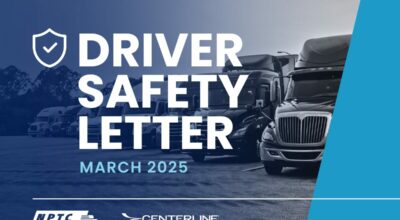5 critical safety metrics you should be tracking for your drivers

As someone who employs or uses drivers, your top priority should be the health and safety of your drivers. One way to ensure you are keeping safety top of mind is by tracking safety metrics.
This can help keep you updated on any issues that arise as well as helping to show patterns in your safety records. If a negative pattern emerges, then you can easily adapt your safety program accordingly.
Here are a few trucking industry safety metrics to consider tracking.
Vehicle crash rate
Vehicle crash rate is a pretty standard, all-around safety metric that every operation should be tracking. This metric can show you how frequently your drivers are in crashes and show you quickly if you have a big safety program among your drivers.
You can calculate this by multiplying the number of crashes over the past 12 months by 1,000,000 then dividing by the total vehicle miles traveled over the same period.
It may also be helpful to track the types of crashes occurring and other details about the crashes to build a fuller picture.
Crash severity
In addition to gathering your vehicle crash rate, you should also be tracking the severity of the crashes. You can do this by totaling the cost of a vehicle crash and from that, calculating the average cost per crash.
Keep in mind that crashes often include more indirect costs outside of property damage or injury expenses. Also think of potential operations disruptions, admin costs, morale, productivity and more when calculating the true cost.
Rate of pre-trip inspection completions
Pre-trip inspections are one of the most important tools to prevent accidents on the road as well as eliminate downtime and violations. But unfortunately, they are also something that many drivers skip.
By tracking inspection completion rates, you can hold your drivers accountable for completing this critical safety step. You can also match up data to show the impact of pre-trip inspections on your other safety metrics.
Not sure where to start with your pre-trip inspection? Centerline’s Safety Manager, Jim Ledbetter outlines 5 key components that you should never overlook during a pre-trip inspection in this on-demand webinar.
ELD data
If you are taking advantage of installing all the possible tools your onboard platform provider has to offer, you can get a good picture of safety metrics and other critical data. An electronic logging device (ELD) can track fuel, over idling, speeding, harsh breaking events, over acceleration and other valuable pieces of data. These metrics can help you not only identify unsafe and aggressive driving, but can also show which drivers are abusing equipment. If you have drivers constantly pushing you equipment past it’s limit, you are risking frequent breakdowns and hazard risks.
NRO/PRO rate
Do you solicit feedback from the public, internal team members or industry partners about your drivers? If you have a “how’s my driving” sticker on any of your trucks, you should be tracking the rate of negative road observations (NRO) and positive road observations (PRO).
Everything submitted should be documented and tracked, even if you are giving the benefit of the doubt to the driver.
This can help determine whether patterns are emerging about certain drivers, both positive and negative. But documentation can help you take action either way, especially if there are other metrics that corroborate any feedback.
It can help you recognize safe and professional drivers for their outstanding work, boosting morale and investment in your safety program.
If you don’t solicit feedback from the public, onboard cameras might be a suitable alternative. Adding them can help you coach and recognize drivers for both safe and unsafe behaviors.
Need help creating a better safety program? We can help. Centerline Drivers has a dedicated in-house safety team to ensure every driver is safe on the road. Learn how our safety program is different.


